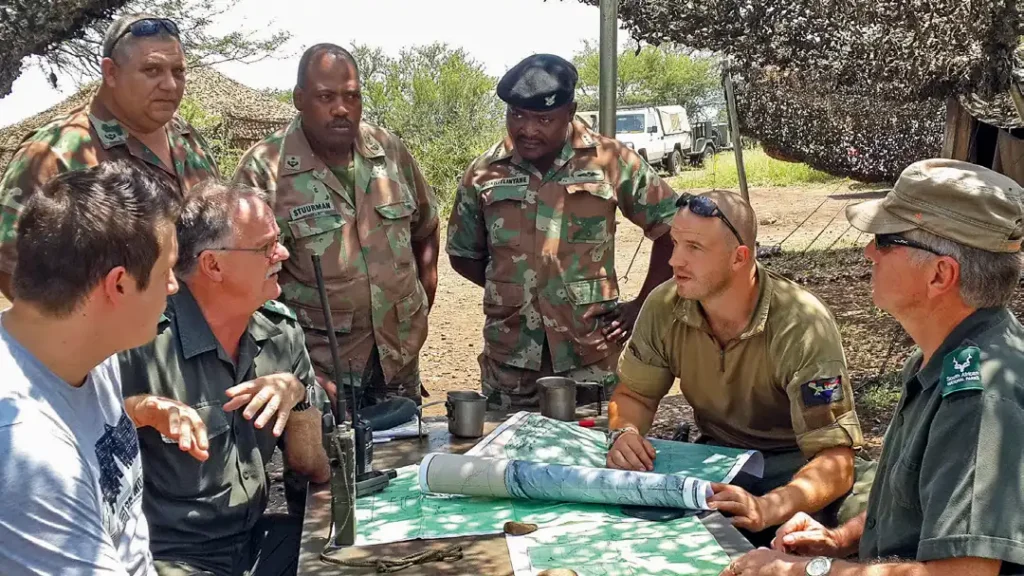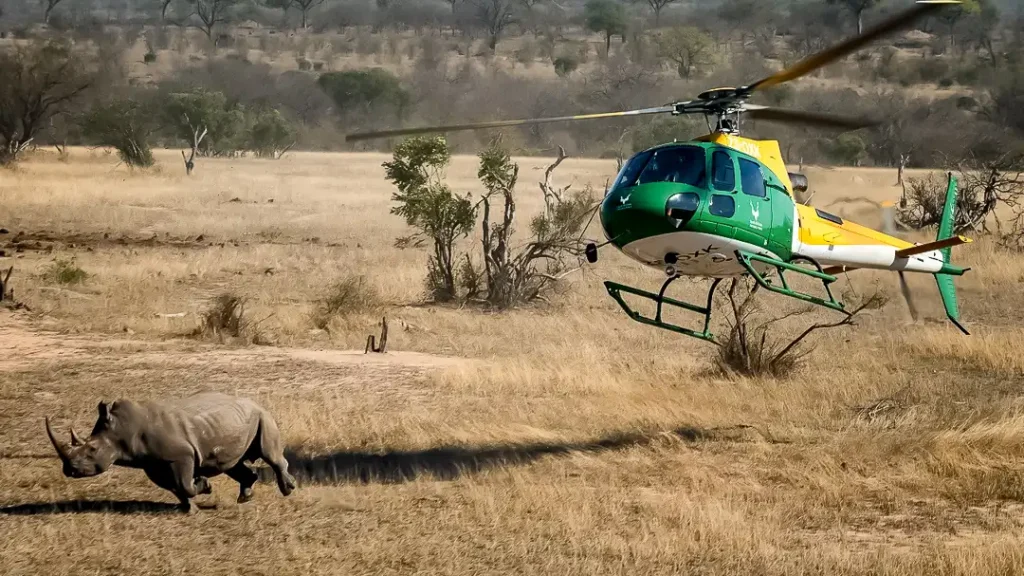Innovative Solutions in the Fight Against Poaching

Every year on September 22, the world comes together to celebrate World Rhino Day, a time to raise awareness about the urgent need to protect these incredible animals. With rhino populations still under threat from relentless poaching, cutting-edge technology is playing an increasingly crucial role in their survival.
In the book Rhino War, co-authored by Major General (Ret) Johan Jooste and Tony Park, we get an inside look at the battle to save South Africa’s rhinos. Jooste, a former commander of the Kruger National Park’s ranger corps, led the charge against poaching during one of the most critical periods in conservation history. His tenure saw the introduction of groundbreaking technology, including the Meerkat wide-area surveillance system, which proved to be a game-changer.
Here’s a media release we put together for World Rhino Day, 2022
The Tech Battle to Save Rhinos
While some new technologies delivered impressive results, others fell short. Rhino War takes an honest look at what worked, what didn’t, and the lessons learned along the way. Under Jooste’s leadership, and in the years that followed, rhino poaching numbers declined significantly, proving that the right strategies—combined with the right tech—can make a real impact.
But the fight is far from over. Ten years after first stepping into the war against poaching, Jooste has helped develop an updated Technology Roadmap, outlining how cutting-edge innovations can be harnessed to protect both the environment and endangered species.
One of the key takeaways from his experience?
“Technology makes things possible, but people make things happen.”
What Could the Future Hold?
Imagine a future where rhino conservation is powered by sci-fi-like advancements:
- Surveillance balloons equipped with radar and long-range sensors floating above reserves.
- Electronic and radioactive tracking tags on rhinos to monitor their movements in real-time.
- AI-powered satellites keeping watch over protected areas 24/7.
- Rangers in ‘smart armor’ riding electric bikes or even flying personal aviation vehicles over the bush.
It may sound like something out of a futuristic movie, but many of these ideas are already in development.
Lessons from Kruger’s Fight Against Poaching
When Jooste was recruited by SANParks in 2012 to lead Kruger’s anti-poaching efforts, the crisis was at its peak. Under his leadership, new strategies were implemented, including military-style ranger training, improved communication systems, and the use of air assets and trained dogs. But it was the Meerkat system, developed by CSIR (Council for Scientific and Industrial Research), that proved to be one of the most effective tools for detecting and tracking poachers.
Jooste warns that not all tech is created equal. Some conservation efforts have fallen victim to ‘donor pull’ and ‘industry push’, where well-meaning funders and tech companies push flashy new gadgets that may not be the best fit for real-world conditions. For example, early enthusiasm around drones led many to believe they would be the ultimate solution for tracking poachers. In reality, while drones have a role to play, ground-based radar systems like Meerkat have proven far more effective in detecting human movement over vast landscapes.

Sustainable Solutions for the Future
Jooste stresses that technology must be sustainable—not just a short-term fix. Equipment needs to be maintained, and solutions should be designed for long-term use, either through funding maintenance contracts or outsourcing operations to dedicated providers. Additionally, rangers must be properly trained to use new technology effectively. If a system is too complex or takes up too much of their time, it can become a liability rather than an asset.
The Sky’s the Limit
With continued innovation, the next generation of wildlife rangers will be better equipped than ever. Future conservation efforts may include:
- Smart body armour with built-in sensors and heads-up displays.
- Satellite-connected smartwatches providing instant communication in remote areas.
- AI-assisted monitoring systems that predict poaching threats before they happen.
- Mobile aerostat balloons (similar to Meerkat) that can be deployed in different locations as needed.
As technology evolves, so too does our ability to protect one of Africa’s most iconic species. With the right approach—and the right people leading the way—there is hope that we can turn the tide in the fight against rhino poaching.
To learn more about the battle to save rhinos and the role technology plays, check out Rhino War, available in bookstores and online.